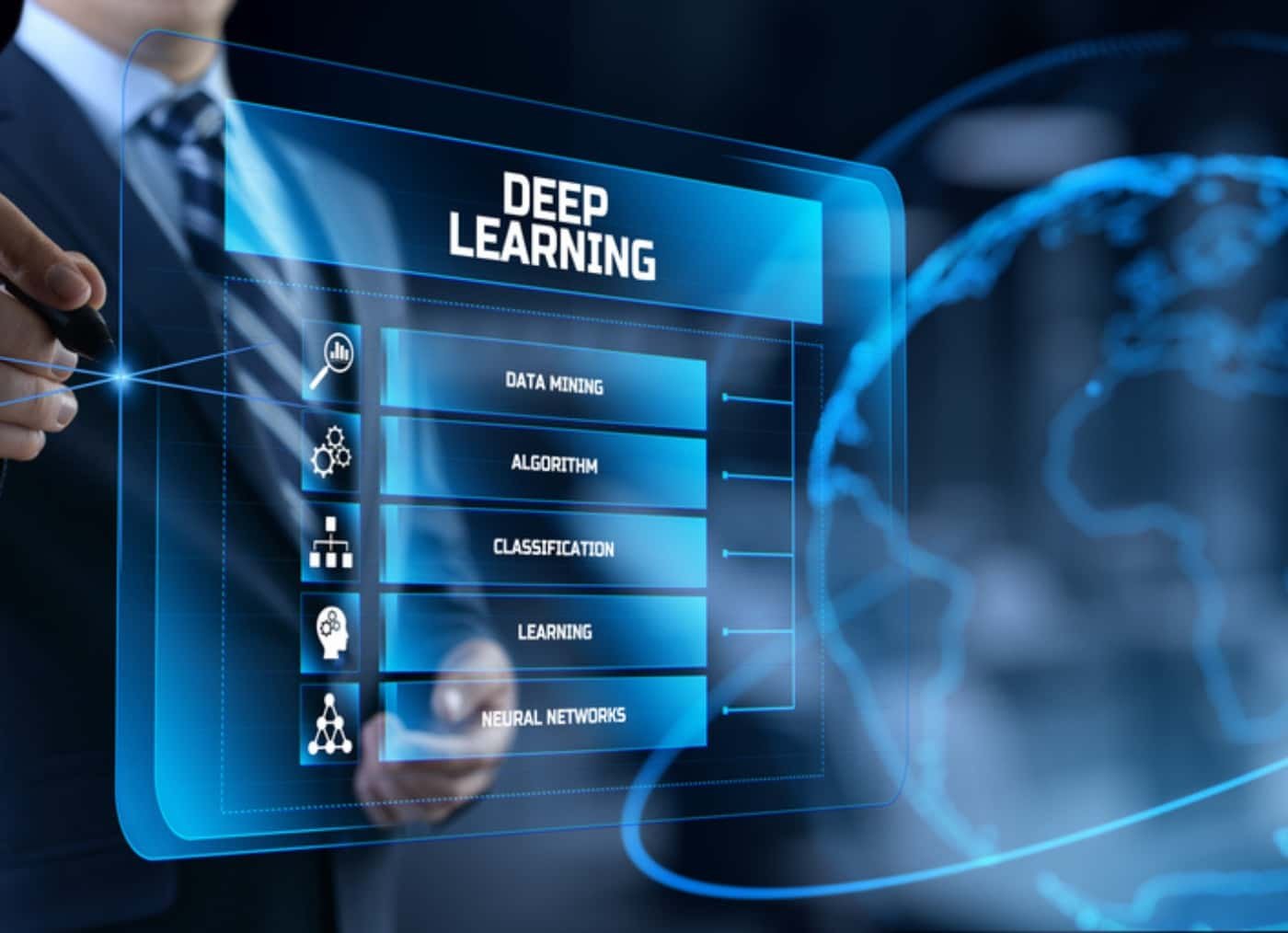Introduction to Deep Learning Algorithms:
Deep learning algorithms are a subset of machine learning techniques that are designed to automatically learn and represent data in multiple layers of abstraction. These algorithms have shown remarkable success in solving a wide range of complex tasks, such as image recognition, natural language processing, speech recognition, and more.
At the core of Deep Learning is the artificial neural network (ANN), which is inspired by the structure and function of the human brain. Neural networks consist of interconnected nodes (neurons) organized into layers: an input layer, one or more hidden layers, and an output layer. Each node receives input data, performs calculations, and passes the results to nodes in the subsequent layer.
The learning process in Deep Learning Algorithms involves adjusting the weights and biases of the connections between neurons to minimize the difference between predicted and actual outputs. This process is known as training, and it relies on large amounts of labeled data.
How Deep Learning Algorithms Work?
Deep learning algorithms work by iteratively learning patterns and representations from data through a process known as training. The primary components of Deep Learning Algorithms are artificial neural networks (ANNs), which are inspired by the structure and function of the human brain. Let’s dive into the working of deep learning algorithms:
-
Data Preparation:
-
-
- Deep Learning algorithms require a large amount of labeled data for training. This data is split into two sets: the training set used to update the model’s parameters, and the validation/test set used to evaluate the model’s performance.
- The data is often preprocessed to ensure it is in a suitable format, normalized, and transformed into a representation suitable for the specific Deep Learning model being used.
-
-
Initialization:
-
-
- The neural network’s architecture is defined, including the number of layers, the number of neurons in each layer, and the type of activation functions used.
- The initial weights and biases of the neural network are randomly assigned. Proper initialization is crucial to avoid getting stuck in local minima during training.
-
-
Forward Propagation:
-
-
- During the training process, the input data is passed through the neural network in a forward direction, layer by layer.
- Each neuron in a layer receives the weighted sum of inputs from the previous layer, applies an activation function, and passes the output to the next layer.
- This process continues through the hidden layers until the output layer is reached, producing the predicted output.
-
-
Loss Function:
-
-
- A loss function is used to measure the difference between the predicted output and the actual target (ground truth) for each input in the training set.
- The choice of loss function depends on the specific task. For example, mean squared error (MSE) is often used for regression problems, while cross-entropy loss is common for classification tasks.
-
-
Backpropagation:
-
-
- Backpropagation is a crucial step in training deep learning algorithms. It is used to calculate the gradients of the loss function with respect to the model’s weights and biases.
- The gradients represent the sensitivity of the loss function to changes in the model’s parameters. They indicate how much each weight and bias should be adjusted to reduce the prediction error.
-
-
Optimization:
-
-
- An optimization algorithm, such as stochastic gradient descent (SGD) or one of its variants (e.g., Adam, RMSprop), is used to update the model’s weights and biases based on the calculated gradients.
- The learning rate, a hyperparameter, controls the step size in which the optimization algorithm adjusts the weights and biases. Proper tuning of the learning rate is essential for efficient and stable training.
-
-
Iterative Training:
-
-
- The training process iterates over the entire training dataset multiple times (epochs). In each epoch, the neural network processes all the training examples, updates the weights and biases, and fine-tunes its parameters to minimize the loss function.
-
-
Validation and Testing:
-
-
- After training, the model is evaluated using the validation/test set to assess its generalization performance on unseen data.
- The model’s performance metrics, such as accuracy, precision, recall, and F1 score, are calculated to understand its effectiveness on the task.
-
-
Deployment:
-
- Once the Deep Learning model achieves satisfactory performance on the validation set, it can be deployed to make predictions on new, unseen data in real-world applications.
By adjusting the model’s architecture and hyperparameters, Deep Learning Algorithms can be adapted to various tasks and data types, enabling them to solve complex problems and outperform traditional Machine Learning methods in certain domains.
Read Blog: How to build a Machine Learning Model?
Top 10 Types of Deep Learning Algorithms in ML:
Deep Learning algorithms encompass a variety of architectures and techniques, each designed to handle specific types of data and tasks. Here are some of the key types of Deep Learning algorithms:
-
Convolutional Neural Networks (CNNs):
-
-
- CNNs are a class of Deep Learning models specifically designed for visual data, such as images and videos.
- They utilize convolutional layers to automatically learn and extract local features and patterns from the input data.
- CNNs are well-known for their ability to capture spatial hierarchies and translation invariance, making them highly effective in tasks like image classification, object detection, and image segmentation.
- By using pooling layers, they downsample the data and reduce computational complexity while retaining important features.
- CNNs have achieved groundbreaking results in computer vision and are widely used in various real-world applications, including autonomous vehicles, medical image analysis, and facial recognition systems.
-
-
Long Short-Term Memory Networks (LSTMs):
-
-
- LSTMs are a type of recurrent neural network (RNN) designed to address the vanishing gradient problem in traditional RNNs.
- They have memory cells with a gating mechanism that allows them to capture long-range dependencies in sequential data.
- LSTMs are particularly suitable for tasks that involve sequential patterns, such as natural language processing, speech recognition, and time series prediction.
- With their ability to remember and forget information over extended periods, LSTMs have become a fundamental tool for various sequence-to-sequence learning tasks.
-
-
Recurrent Neural Networks (RNNs):
-
-
- RNNs are a class of neural networks designed to handle sequential data by maintaining internal states.
- They are capable of processing data of varying lengths and can model temporal dependencies between elements in a sequence.
- RNNs have been applied in a wide range of tasks, including speech recognition, language translation, sentiment analysis, and music composition.
- Despite their effectiveness in capturing short-term dependencies, traditional RNNs suffer from the vanishing gradient problem, which can limit their ability to learn long-term dependencies. This is where LSTM networks come into play.
-
-
Generative Adversarial Networks (GANs):
-
-
- GANs consist of two neural networks, a generator and a discriminator, trained in a competitive setting.
- The generator network generates synthetic data that mimics the real data distribution, while the discriminator network tries to differentiate between real and fake data.
- Through this adversarial process, GANs learn to generate highly realistic data, such as images, audio, or text.
- GANs have been used for impressive applications, including generating photorealistic images, creating artwork, and data augmentation for training other models.
-
-
Radial Basis Function Networks (RBFNs):
-
-
- RBFNs are a type of feedforward neural network where neurons respond to input data based on the distance from a center point (also called a prototype).
- They are particularly useful for function approximation and pattern recognition tasks.
- RBFNs have been applied in areas like control systems, time series prediction, and medical diagnosis.
-
-
Multilayer Perceptrons (MLPs):
-
-
- MLPs are the foundational Deep Learning models, consisting of multiple layers of interconnected neurons.
- They are well-suited for a wide range of tasks, including classification, regression, and pattern recognition.
- MLPs have no recurrent connections, meaning they process data in a one-way feedforward manner.
- They have been used extensively in various applications, from simple data analysis to complex decision-making tasks.
-
-
Self-Organizing Maps (SOMs):
-
-
- SOMs, also known as Kohonen networks, are unsupervised learning models used for dimensionality reduction and data visualization.
- They organize data in a lower-dimensional map while preserving the topological relationships between data points.
- SOMs have been used in data clustering, data compression, and anomaly detection.
-
-
Deep Belief Networks (DBNs):
-
-
- DBNs are a class of Deep Learning models consisting of multiple layers of stochastic, latent variables.
- They are generative models, capable of learning the underlying distribution of data and generating new samples.
- DBNs have been used in applications such as feature learning, collaborative filtering, and speech recognition.
-
-
Restricted Boltzmann Machines (RBMs):
-
-
- RBMs are building blocks of Deep Learning models, such as DBNs and deep neural networks.
- They are used for unsupervised feature learning and dimensionality reduction.
- RBMs have been instrumental in pretraining deep neural networks and initializing their parameters for better performance.
-
-
Autoencoders:
-
- Autoencoders are another type of unsupervised learning models that aim to reconstruct the input data at the output layer.
- They consist of an encoder and a decoder, which compress and reconstruct the data, respectively.
- Autoencoders are often used for dimensionality reduction, anomaly detection, and denoising data.
These Deep Learning algorithms have demonstrated their effectiveness across a wide range of applications and continue to be a driving force behind advancements in artificial intelligence and Machine Learning.
FAQ:
Which algorithm is best in Deep Learning?
Multilayer Perceptron can be identified as the best algorithm in Deep Learning because they are suitable for classification, regression and recognition of pattern.
Is CNN a deep-learning algorithm?
Convolutional Neural Network or CNN is a Deep Learning algorithm used for visual data like images, etc.
Which is an example of a Deep Learning algorithm?
An example of Deep Learning model which uses an algorithm of CNN includes facial recognition feature in many devices.
How to write a Deep Learning algorithm?
Following are the ways to write Deep Learning algorithms:
- Intialise the weights
- Multiply the weights by the input and then sum it up
- Compare result against the threshold for computing the output
- Keep the weights updated
- Repeat the entire process.
Conclusion
In conclusion, the above blog provides you with an in-depth understanding of Deep Learning Algorithms in Machine Learning. You got to know about how Deep Learning works and the best types of Deep Learning algorithm in ML. The application of Deep Learning can hence, be experienced in different sector based on the purpose and need. You can effectively learn Deep Learning algorithms use and depict your proficiency in the field.











